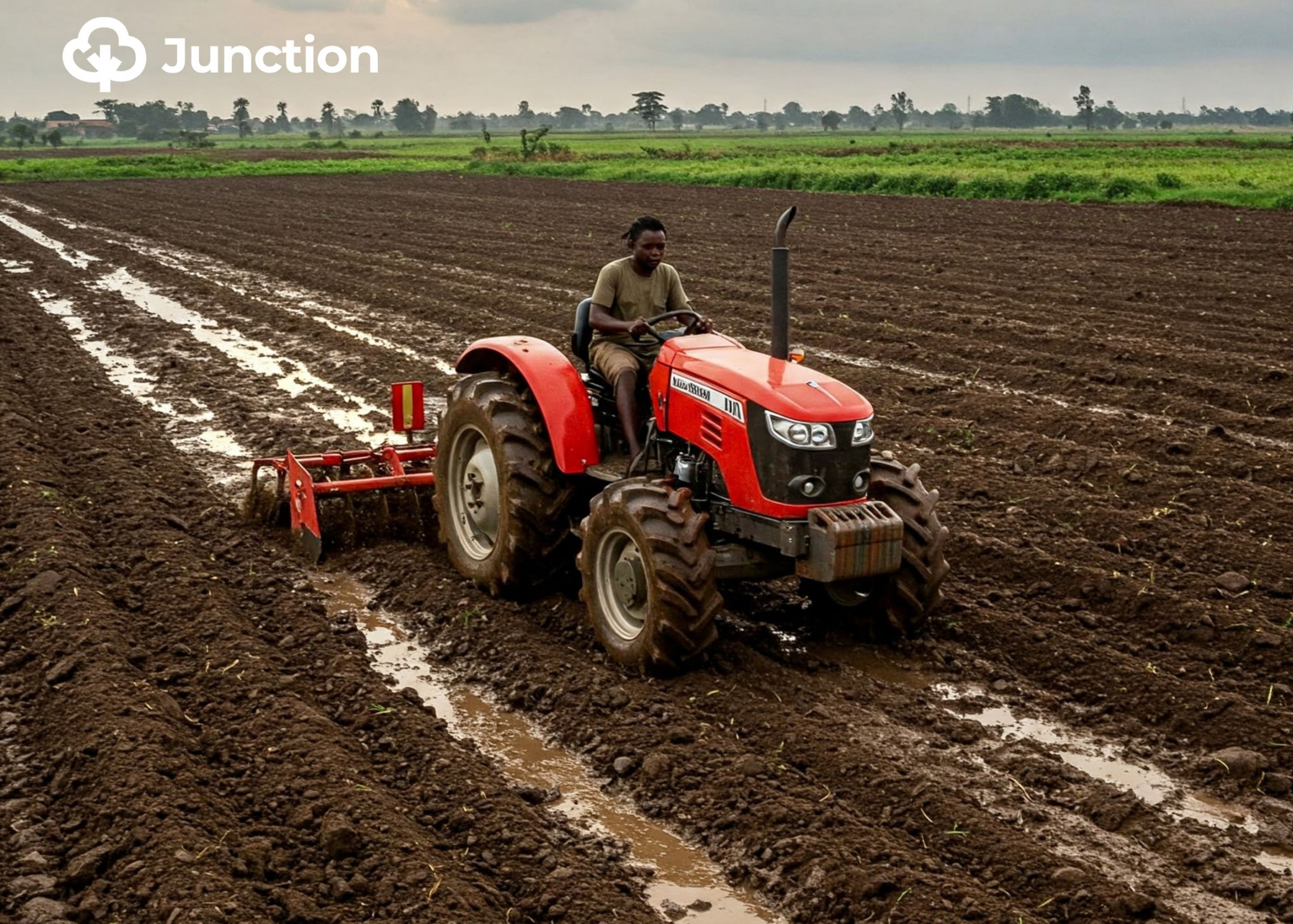Rainy seasons are an important time for farmers in Nigeria who still rely on rainwater for irrigation.
Only a small percentage of Nigeria’s farmland is irrigated (less than 6% of irrigable farmlands), so most farmers have no choice but to plant during the rainy season when water is naturally available for crops.
Setting up irrigation systems (like boreholes, pumps, and canals) can be expensive and out of reach for many smallholder farmers, who make up over 70% of Nigeria’s farming population.
The wetland is easy for farmers to till and for plants to germinate. The recurring rain reduces the cost of irrigation and boosts soil fertility. The humid environment encourages more work and enhanced productivity on the farm.
Many farmers still use age-old techniques passed down through generations, which align with seasonal rainfall patterns. They plant just before or at the start of the rains and harvest before the dry season begins.
However, the recent rise in volume of rainfall due to climate change has made farmers now welcome the rainy season with mixed feelings. They fear strong winds and floods, which have destroyed several farms and livelihoods.
This is why we have put together five ways you can maximise the rainy season as a farmer in Nigeria, even in the face of the changing climate conditions.
1. Plan and prepare your farm.
Planning and preparation are crucial for farmers who want to make the most of the rainy season. You don’t want to be caught off guard because you have no control over when it rains and how much it will. Instead, you should equip your farm with the necessary resources and be ready to take prompt action whenever needed.
Land preparation is key to farming in the rainy season, and planning your activities as a farmer ahead of the season is key. Plan and prepare to clear the land of stumps and debris. Tilling and leveling of the field to prevent waterlogging and ensure better drainage and aeration of the soil are also important. These activities are ideally done before the rainy season or at the early onset of the rainy season.
Other pre-planting, planting and post-planting activities need to be scheduled based on the scale of your farm and the amount of resources to ensure your crops develop well despite any challenges related to the rainy season.
2. Plant suitable crops.
There are many crops ideal for planting during the rainy season in Nigeria. Crops like Maize, Rice, Cassava, Yam, Groundnut, Tomato, and Okra are suitable for planting and generally grow well during this season, but you need to know which one is suitable for you to plant. Several factors will help you determine this.
Current rainfall pattern and duration in your region, your farm soil type and fertility are things to note before deciding on what to plant. The crop water requirements, length of growth season and climate resilience will also help you decide on suitability.
You might need to stay away from crops that are vulnerable to rainy season pests or diseases. Some vegetables, such as bitter gourd melon, calabash, and angled luffa, are more susceptible to pests at the height of the rainy season. It might be better to plant them towards the end of the season or select high-quality variants that are resistant to disease and pests.
The most important thing is your personal or organisational risk threshold as a farmer. Knowing what your risk mitigation strategy can cover is crucial in determining which crop to plant in this rainy season. This is because you can only harvest a crop that you can keep in this rapidly changing climate.
3. Ensure effective guards and safety nets are available.
Flash floods and heavy winds are expected during rainy seasons, and their chance of occurrence has increased in recent years due to changing climate conditions. This can lead to waterlogging, soil erosion, structures collapsing or equipment damage.
Implementing effective water management and soil conservation techniques are crucial. Consider building raised beds or using raised planters to ensure good drainage and prevent flooding. Cover crops and mulch can help to prevent soil erosion and retain moisture in the soil.
Inconsistent rainfall patterns may also mean scant rainfall in some regions, so you might need to install irrigation systems to ensure crops receive adequate water during dry spells within the rainy season.
Strong winds are also common in the rainy season, so reinforcing farm structures or removing unnecessary ones may be crucial.
To maximise the rain season as a farmer, you need to put every guard and necessary safety nets in place to prevent or minimise destruction or damage to the farm.
4. Be ready to fight weeds, pests or diseases.
The frequent rain and humid climate in the rainy season help weeds grow, so farmers should also be prepared for potential weed issues. Delayed or missed weed control events due to wet soils can allow weeds to escape optimum management windows.
Pest infestations and diseases are common challenges during the rainy season. Slugs and Seed Corn Maggots, Black Cutworms, Soybean Aphids, Armyworms (e.g., Fall Armyworm), Helicoverpa Caterpillars and Pod-Sucking Bugs are some pests that thrive in the rainy season. Some fungal diseases (Phytophthora, Alternaria and Gummy Stem Blight) and Bacterial diseases (Bacterial Spot, Fire Blight) can also be a source of worry for farmers during this season.
Farmers should adopt integrated pest management (IPM) techniques, such as crop rotation and biological control, to manage pest populations. Regular inspection of plants for signs of pests and diseases is important. Using fungicides and bactericides and practicing good sanitation and hygiene is essential to prevent the spread of disease.
5. Get good storage and processing means for harvest.
Harvesting during the rainy season can be challenging. Wet grounds can affect machine operation and even transportation. Wet crops harvested are prone to mold, which leads to post-harvest losses. Some farmers even delay harvesting to avoid these problems, but harvesting can be easier if you put the right things in place.
Drying, cleaning and sorting, pest control, and an effective monitoring system for the harvested crops are crucial. Especially for grains and easily perishable crops like tomatoes and vegetables.
Having a good storage system to protect harvested crops from the continued wet conditions and potential spoilage is important. A proper storage facility will help maintain the quality of the harvested produce.
Similarly, having means for processing crops can add value and extend their shelf life, which is particularly important during a season with high humidity that can affect the preservation of agricultural produce.
In conclusion, while the rainy season in Nigeria presents both opportunities and challenges, Nigerian farmers can maximise their yields and minimize risks by diligently planning and preparing their farms, planting suitable crops, implementing effective safeguards against adverse weather, proactively managing pests and diseases, and ensuring they have adequate storage and processing capabilities for their harvest.
By embracing these strategies, farmers can thrive during the wet season and contribute to a more sustainable and resilient agricultural system.



